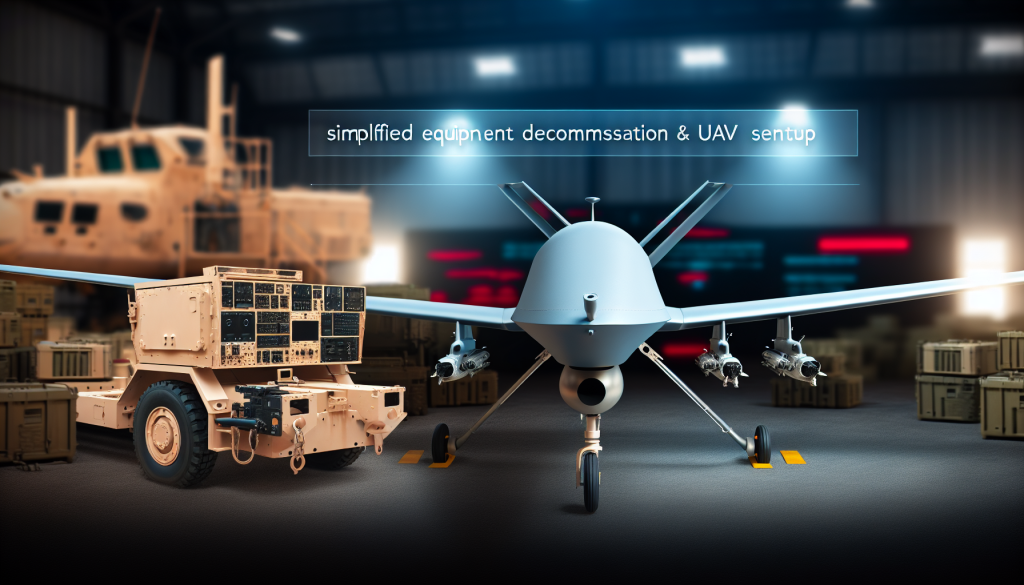Simplifying the Decommissioning of Military Equipment in Ukraine: A New Era for UAV Management
The Ministry of Defence of Ukraine has recently announced significant changes to the Procedure for Decommissioning Military Property within the Armed Forces and the State Special Transport Service. By simplifying processes associated with writing off military equipment, including unmanned aerial vehicles (UAVs), the new regulations aim to enhance operational efficiency and reduce bureaucratic hurdles faced by combat units.
Streamlined Write-Off Processes
One of the primary highlights of the new regulations is that brigade commanders now have the authority to independently write off military property that has been lost, damaged, or destroyed during operations. This is achieved through a single act of writing off, which significantly simplifies the process.
Before these changes, the decommissioning of military equipment often involved cumbersome paperwork and approvals from upper management, which could delay critical actions on the battlefield. Under the new rules, the process is unified, allowing for a more straightforward and efficient approach to property management.
Who Benefits from the Changes?
The adjustments made to the decommissioning process affect all military units that maintain accounting records, even those not directly part of the traditional branches of the armed forces. Notably, this includes units responsible for UAV operations, which have become increasingly vital in modern warfare.
A crucial aspect of this reform is that military property valued at up to UAH 1.7 million can now be written off using a single act—this flexibility helps eliminate confusion in documentation and standardizes the process across different military installations.
Digital Transformation: A Game Changer
The reforms also emphasize the importance of digital transformation within the military framework. Defence Minister Denys Shmyhal highlighted that maintaining digital records allows for even simpler approvals for write-off acts. Consequently, there is no need for command approvals from higher management, resulting in expedited action on the ground.
For units with digital records, the legislative changes mean that they are no longer required to maintain additional paper logs. This not only saves time but also allows commanders and logisticians to focus more on critical combat missions rather than administrative tasks.
Enhanced UAV Decommissioning
The new rules significantly streamline the decommissioning of UAVs and their components. Previously, the process required permissions from the Logistics Forces Command. Now, military units can decommission UAVs using a single act of changing the qualitative state, which is approved by the unit commander. This means that units have increased autonomy in re-equipping devices or utilizing necessary components.
UAV-related write-offs are now permissible for various scenarios, including:
- Drones used to successfully destroy targets.
- Systems deployed as false targets during training or combat operations.
- Components like antennas, batteries, and various bits of equipment that are essential for UAV functionality.
In cases where multiple UAVs are launched in a single day, only one consolidated write-off act is required for the entire unit, streamlining the documentation process even further.
Simplified Assembly and Disassembly
The new regulations also introduce flexibility for the assembly and disassembly of unmanned systems. Military units can now disassemble UAVs and their components before and after commissioning without needing multiple approvals from higher management. This change facilitates a quicker response to combat needs and allows for efficient use of resources.
Units can seamlessly transfer equipment necessary for their operations, ensuring that readiness and adaptability are maintained.
Benefits of Digital Property Accounting
With the new rules advocating for digital property accounting, the efficiency of managing military assets is set to improve dramatically. The approval of a single write-off act can now be accomplished without duplicating records in paper logs. The digital format brings a host of advantages, such as reducing time spent on paperwork and simplifying the write-off process.
In implementing these changes, the Ministry of Defence has outlined a clear list of documents required to accompany a single write-off act. This includes:
- Excerpts from the commanding officer’s order regarding the property write-off.
- Documentation for any changes in quality conditions, particularly concerning unmanned systems.
- Evidence of asset valuation and, where applicable, photographic proof of destruction or loss of property.
Conclusion
By focusing on these transformative changes, the Ministry of Defence of Ukraine is proactively enhancing the management processes for military property, particularly UAVs. This modernization effort not only alleviates bureaucratic pressures on combat units but also aligns with the technological advancements of the modern battlefield. As these changes take root, the Ukrainian military’s ability to adapt and respond to dynamic operational requirements is expected to increase, ensuring that they remain agile in the face of challenges.

